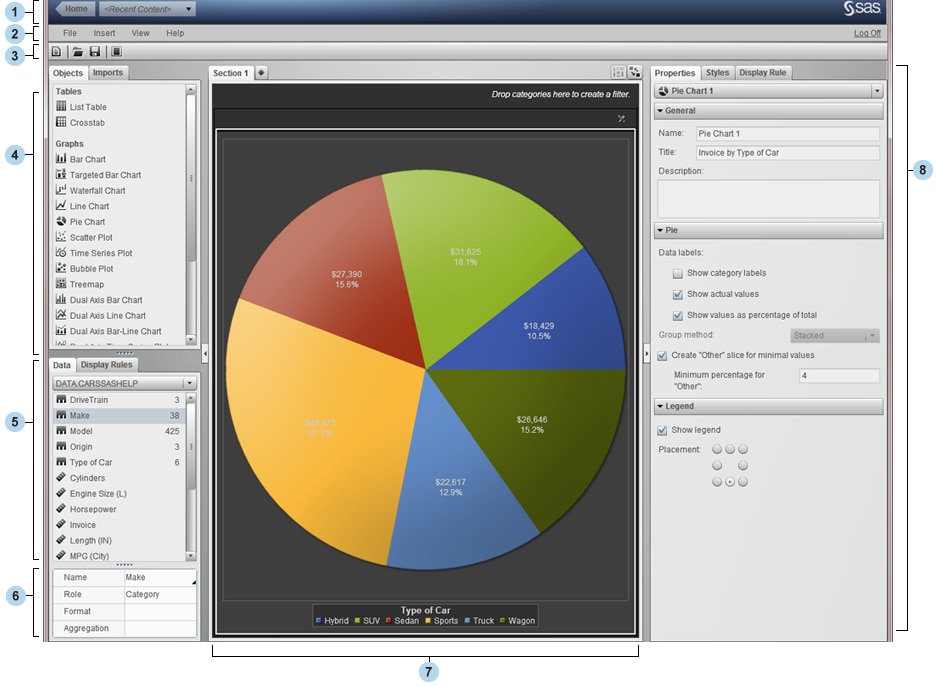Your First Look at the Designer Interface
When you are designing
reports in SAS Visual Analytics, you see the designer interface. Here
are the features of the designer interface:
The Designer Interface

| 1 | The application bar enables you to return to the SAS Visual Analytics home page and access your recent created or viewed reports. You can also access recently used visual explorations in your recent history. When you select a visual exploration, the application takes you to the explorer interface. |
| 2 | The menu bar provides menu items that apply to the entire report or to the currently displayed report section. Actions include creating a new report, adding a new section, inserting new report objects, and adding interactions. You can also log off from SAS Visual Analytics. |
| 3 | The
toolbar contains icons that enable you to manage your reports. You
can click  to hide the left and right panels. Or, you can click to hide the left and right panels. Or, you can click  to display the side panels. to display the side panels.
|
| 4 | The Objects and Imports tabs are in the left panel. The Objects tab provides a list of the tables, graphs, and gauges that can be used in a report or dashboard. The Imports tab provides a list of reports and report objects that have been created in the designer interface or exported from the explorer interface. This enables you to create reports from multiple sources and create full-featured reports. You can choose objects or sections in these reports to include in either a new or an existing report. |
| 5 | The Data and Display Rules tabs are in the left panel. The Data tab enables you to select a data source and data items for your report. The Display Rules tab enables you to create a new display rule, which is used by a gauge to designate intervals and colors for ranges. You can also edit or delete an exiting display rule for report objects, like gauges. |
| 6 | The data item table provides information about a selected data item, including the name, role, format, and aggregation. These data item properties can also be modified, which impacts all the report objects that use the data item. |
| 7 | The canvas is the workspace for building a report. Each report section has its own canvas, which can contain a single or multiple report objects. A report can have multiple sections, which can be accessed by using the tabs at the top of the canvas. There is also an area at the top of the canvas where you can drop categories to create section filters. |
| 8 | The right panel enables you to work with details about the report and report objects. The Properties tab lists the properties for the currently selected report object. The object’s name, title, and description are listed. Information that is specific to the report object type, such as the axes and legend are also included. If a report object is not selected, then the properties are for the section and the report. The Styles tab enables you to specify the data styling, frame styling, text styling, and data colors for a selected report object. The Display Rule tab enables you to populate or add intervals for report objects, like gauges. You can also edit or delete a display rule for a report object. |